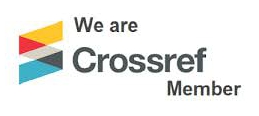Muscle Activation Pattern of Upper and Lower Back Muscles during Islamic Prayer (Salat)
Keywords:
electromyography, EMG, back pain, salatAbstract
Electromyographic (EMG) activity of muscles can help us to assess the muscular functions during daily activity. In this paper we investigate two major muscles in upper and lower back during movements in Salat. Specifically, the dorsal side of human body has been assessed using EMG activation pattern and muscle cocontraction. Two upper and lower back muscles named as Trapezius and Erector Spinae muscles were investigated during four positions involved in Islamic prayer (Salat). Muscle activation pattern has been elucidated from raw EMG signal after a series of signal processing steps. Next, muscle co-contraction index was calculated from the pattern. Results show that, both muscles maintain a balance in terms of contraction and relaxation during bowing and prostration position of Salat. In addition, there is a clear co-contraction between upper and lower back muscles in two positions during the prayer. The finding of the study may help to develop rehabilitation program for the Muslim population suffering from back pain that restrain them to perform obligatory Salat.







